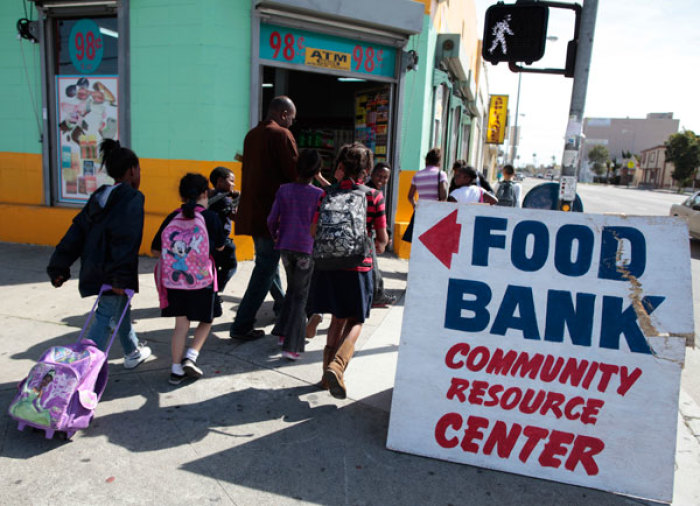Majority of US households with kids worried about food security as millions struggle

Fewer than half of households with kids in the U.S. are “very confident” they can afford food over the next four weeks while 5.6 million households with children reported struggling to afford food in the last seven days, according to new Census survey data.
Joseph Llobrera, director of research at The Center of Budget and Policy Priorities, a nonpartisan research and policy institute, said unless policymakers immediately provide strong economic relief, “widespread food hardship that continues into the holiday season appears likely.”
“Delay can be costly, as food insecurity among children can have long-lasting negative consequences. For infants and young children, the lack of access to good nutrition can lead directly to poorer lifelong outcomes. School-aged children who don’t get enough to eat may have more difficulty learning in school, which can translate to lower high school completion rates and lower earnings potential,” Llobrera wrote in a recent blog post.
“While the risk is greatest for children who chronically lack sufficient food, the shock of becoming food insecure may itself affect children’s behavior, and living in a household that’s even temporarily food insecure is linked with negative development among toddlers.”
The data collected by the U.S. Census Bureau Aug. 19 through Oct. 26, show that in the United States, 12% of households with children reported that their household sometimes or often didn’t have enough to eat in the last seven days. Some 9% of households with children reported that they are “not at all confident” that they will be able to afford the kinds of food they need for the next four weeks while 56% reported that they are less than “very confident.” This means they are only “moderately,” “somewhat,” or “not at all” confident that they will be able to be able to afford the kinds of food they need for the next four weeks.
The data also showed that amid the pandemic, households aren’t just worried about food.
“More than 4 in 10 children live in households that are struggling to cover such basic costs as food, rent or mortgage, car payments, medical expenses, or student loans,” Llobrera said, pointing to negative outcomes associated with the psychological impact of multiple stressors on households.
A recent analysis by The Washington Post also showed that more Americans are now going hungry than at any point during the coronavirus pandemic. Experts told the publication that it is likely that there is more hunger in the United States today than at any point since 1998, when the Census Bureau began collecting comparable data about households’ ability to get enough food.
“It’s been driven by the virus and the unpredictable government response,” Jeremy K. Everett, executive director of the Baylor Collaborative on Hunger and Poverty in Waco, Texas, told The Washington Post.
Daniel Chessare, owner of Saratoga’s Broadway Deli in Saratoga, New York, who began offering free hot roasted chickens to people in need earlier this month, described the families who have reached out for help with food security as not those who people would normally classify as poor or needy.
“A lot of these families are slipping between the cracks because they are not necessarily poor. They are not necessarily destitute," Chessare told The Christian Post. earlier. "They’re not lining up for food stamps or whatever but they are not necessarily making enough money to support their families.”
“A lot of the stories coming in are, one of the spouses is sick or disabled and it’s up to the other person to provide for the whole family. We’re getting a lot of people who are making ends meet but they don’t have that extra money to do something nice. So there is this sort of forgotten middle ground where you’re making too much money to get government programs but not enough money to be able to support yourself. They are not out on the street. They are just quietly suffering without anybody really noticing.”
Randy Young, 58, who recently lined up with his 80-year-old mother with hundreds of other motorists to get a free Thanksgiving meal outside NRG Stadium in Houston, Texas, told The Washington Post he had been struggling since losing his job as a stadium cook.
“It’s a lot of people out here,” he said. “I was just telling my mom, ‘You look at people pulling up in Mercedes and stuff, come on.’ If a person driving a Mercedes is in need of food, you know it’s bad.”




























